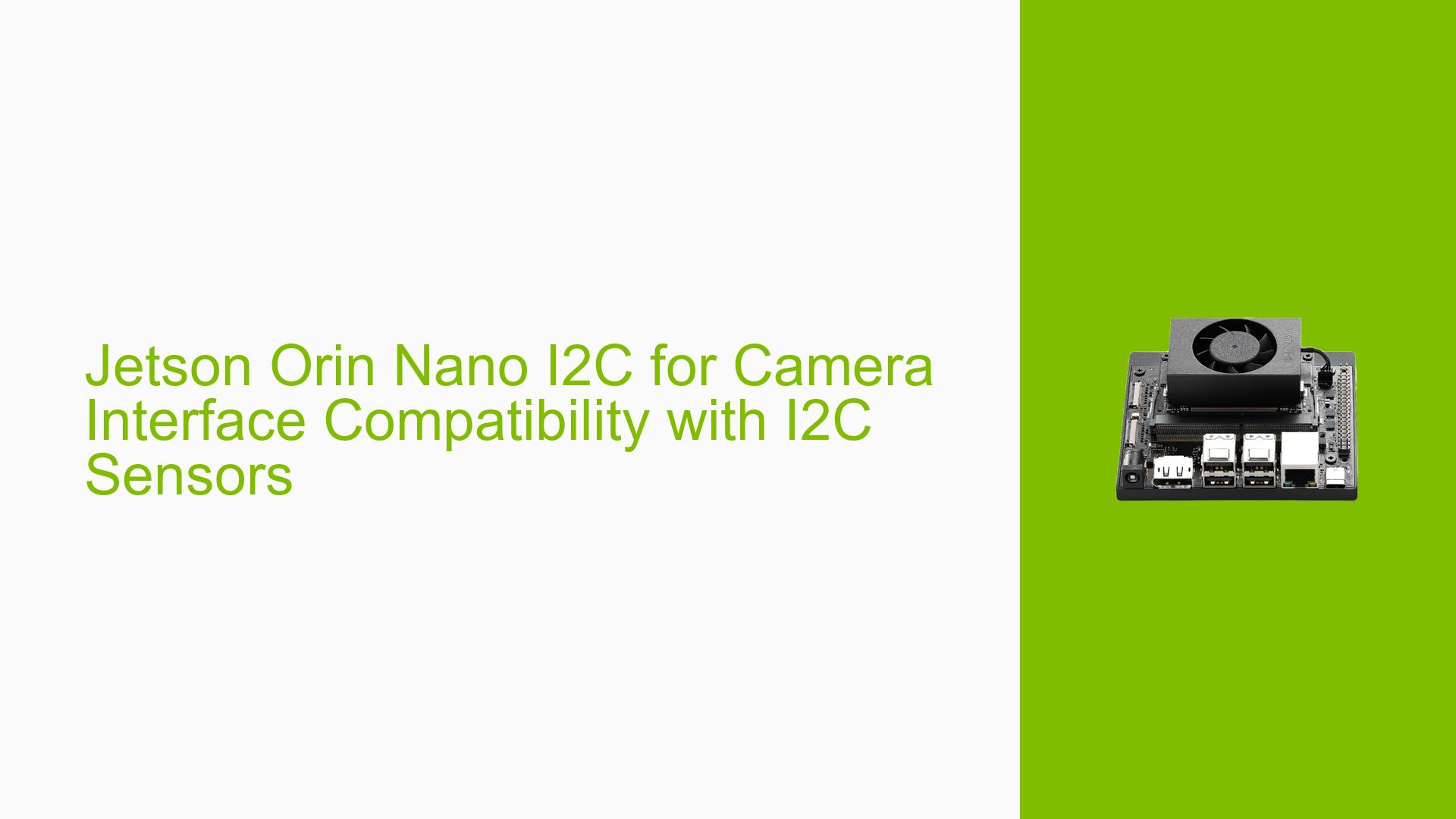Jetson Orin Nano I2C for Camera Interface Compatibility with I2C Sensors
Issue Overview
Users are experiencing confusion regarding the use of the CAM_I2C interface on the Nvidia Jetson Orin Nano Dev board, particularly in relation to its compatibility with I2C sensors. The issue arises during the development of custom PCB boards that integrate MIPI cameras and I2C sensors.
Specific symptoms include:
- Uncertainty about whether the CAM_I2C (pins 213 and 215) can be used for devices other than cameras.
- Concerns about needing to utilize additional I2C ports if CAM_I2C is dedicated solely to camera communication.
The context of the problem occurs primarily during the setup phase of custom hardware configurations, where developers aim to integrate various sensors alongside cameras. The frequency of this issue appears to be consistent among users attempting similar integrations, leading to potential delays in development and functionality.
The impact on user experience includes frustration over unclear documentation and potential limitations in hardware design if multiple I2C interfaces are required.
Possible Causes
Several potential causes for this issue have been identified:
-
Hardware Incompatibility: If CAM_I2C is indeed dedicated for camera use only, developers may need additional I2C interfaces for sensor integration.
-
Software Bugs or Conflicts: There might be software limitations or bugs in the Jetson Orin Nano’s firmware that restrict the use of CAM_I2C for non-camera devices.
-
Configuration Errors: Incorrect configuration settings in device trees or initialization scripts may prevent proper communication with I2C sensors.
-
Driver Issues: Outdated or incompatible drivers may hinder the functionality of I2C interfaces on the board.
-
User Errors: Misunderstandings regarding the capabilities of CAM_I2C could lead to incorrect assumptions about its usability.
Troubleshooting Steps, Solutions & Fixes
To address this issue, users can follow these comprehensive troubleshooting steps and potential solutions:
-
Review Documentation:
- Download and review the "Jetson Orin Nano Developer Kit Carrier Board Specification" for detailed information on CAM_I2C usage. Pay special attention to Figure 1-1, which outlines the block diagram.
-
Check Device Tree Configuration:
- Examine the device tree source for I2C configurations. The relevant file can be found at:
$public_sources/kernel_src/hardware/nvidia/soc/t23x/kernel-dts/tegra234-soc/tegra234-soc-i2c.dtsi - Ensure that CAM_I2C is defined correctly and check if it can be configured for other devices.
- Examine the device tree source for I2C configurations. The relevant file can be found at:
-
Testing Communication:
- Use a simple I2C scan command to check if devices connected to CAM_I2C are recognized:
i2cdetect -y <bus_number> - Replace
<bus_number>with the appropriate number for CAM_I2C.
- Use a simple I2C scan command to check if devices connected to CAM_I2C are recognized:
-
Isolate Hardware Issues:
- If possible, connect a known working I2C sensor to CAM_I2C and test its functionality to rule out hardware defects.
-
Explore Alternative Interfaces:
- If CAM_I2C cannot be used for sensors, consider utilizing other available I2C interfaces on the Jetson Orin Nano. Check which pins correspond to these additional interfaces.
-
Firmware Updates:
- Ensure that the Jetson Orin Nano is running the latest firmware version, as updates may resolve existing bugs related to I2C communications.
-
Community Support:
- Engage with community forums or Nvidia support channels for further assistance or insights from other developers who may have encountered similar issues.
-
Best Practices:
- When designing custom PCBs, consider including multiple I2C interfaces from the outset to avoid compatibility issues later in development.
By following these steps, users should be able to diagnose and potentially resolve issues related to using CAM_I2C with non-camera devices on the Jetson Orin Nano Dev board. Further investigation may be needed if problems persist despite these efforts.
